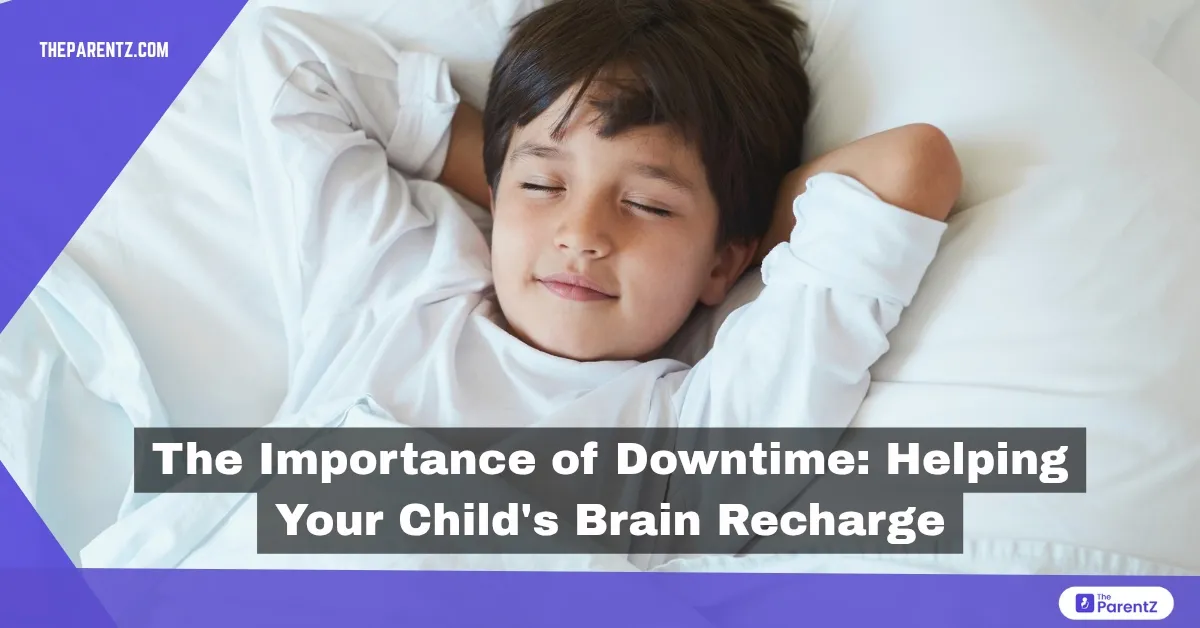Have you ever noticed how your phone starts to lag when too many apps are running? Our children's brains work similarly. In today's world of non-stop activities, endless enrichment opportunities, and constant digital connection, we've somehow convinced ourselves that more is always better for our kids. We rush from school to soccer to piano lessons, quiz spelling words during dinner, and squeeze in coding classes on weekends—all while wondering why our children seem overwhelmed, irritable, or burned out.
What if we told you that one of the most powerful things you can do for your child's development isn't adding another enrichment activity but rather creating space for nothing at all?
As a society, we've become increasingly uncomfortable with unstructured time. We worry that downtime equals wasted time. But neuroscience tells us the exact opposite is true: those moments of "doing nothing" are when some of the most important brain development happens.
Let's explore why downtime isn't just a luxury for our children—it's an absolute necessity.
Why Your Child's Brain Needs Breaks
Think about how you feel after a day of back-to-back meetings with no breaks. Exhausted, right? Your child's developing brain experiences something similar but even more intensely.
When kids have constant stimulation and structured activities without breaks, their brains don't get the chance to process everything they've learned. It's like trying to download too many files at once—eventually, the system slows down or crashes.
Here are some reasons why downtime is essential:
- Processing Information: Kids are exposed to new ideas and experiences every day. Downtime gives their brains the chance to sort through everything they’ve learned and make sense of it.
- Preventing Burnout: Constant activity can lead to exhaustion—mentally, emotionally, and physically. Regular breaks help kids avoid hitting their limit.
- Boosting Creativity: When kids have time to daydream or play freely, their minds wander into creative territory where new ideas and solutions are born.
- Improving Focus: Just like adults, kids need breaks to restore their attention spans and stay productive in school or activities.
- Building Emotional Resilience: Quiet moments help kids learn how to self-soothe and manage their feelings without distractions.
Signs Your Child Needs More Downtime
Watch for these warning signs:
- Trouble falling asleep or staying asleep
- Irritability or emotional outbursts
- Declining interest in activities they used to enjoy
- Complaining of headaches or stomachaches
- Resistance to going to activities or school
These might be your child's way of saying, "I need a break!"
How Downtime Makes Kids Stronger
Contrary to what we might think, giving kids unstructured time isn't "wasting time." It's actually building important life skills:
- Better Academic Performance: Breaks improve memory retention and problem-solving skills, making it easier for kids to succeed in school.
- Happier Mood: Downtime reduces stress and anxiety by giving kids space to relax and recharge emotionally.
- Healthier Social Skills: Unstructured play allows kids to practice collaboration and conflict resolution with peers in a natural setting.
- Greater Independence: Quiet moments teach kids how to entertain themselves and make decisions without relying on external stimulation.
How To Create Downtime For Your Child
Building downtime into your child’s day doesn’t mean cutting out all activities—it’s about finding a balance between doing and resting. Here are some practical ways to help your child recharge:
- Cut Back on Activities: If your child’s schedule is packed with extracurriculars, consider scaling back. Ask them which activities they truly enjoy and prioritize those over others that feel more like obligations.
- Schedule Daily Quiet Time: Set aside time each day for your child to relax without screens or structured tasks—whether it’s reading a book, doodling, or simply lying on the couch.
- Encourage Free Play: Unstructured play lets kids use their imaginations without rules or expectations. This could mean playing outside with friends or building LEGO creations at home.
- Limit Screen Time: While video games or TV shows might seem like downtime, they often overstimulate rather than relax the brain. Balance screen time with quieter activities like drawing or listening to music.
- Be a Role Model: Kids learn by watching you! Show them that it’s okay to take breaks by slowing down yourself—whether it’s reading a book or enjoying a cup of tea.
The Cost of Constant Busyness
What happens if we don't prioritize downtime? The consequences can be serious:
Children who never learn to slow down may develop chronic stress responses that follow them into adulthood. They might struggle with anxiety, have difficulty sleeping, or burn out easily. Perhaps most concerning, they may never develop the ability to be content with themselves and their thoughts—always needing external stimulation or validation.
Finding Balance
To be clear, structured activities are valuable! Sports, music lessons, and academic enrichment all have important benefits. The key is balance.
Think of your child's schedule like their diet—variety and moderation matter. Just as we wouldn't feed our kids only broccoli (even though it's healthy), we shouldn't fill their time with only structured learning or only free play.
Ask yourself: "If this were my schedule, would I feel refreshed or exhausted at the end of the week?"
Conclusion
As parents, we often feel pressure to keep our kids busy so they don’t “fall behind.” But here’s the truth: Downtime isn’t wasted time—it’s what makes everything else possible. When we give our children space to rest and recharge, we’re helping them grow into healthier, happier individuals who know how to balance work with play.
So, take a step back from the hustle—and encourage your child to do the same. Slowing down isn’t about doing less; it’s about doing what matters most for their well-being!









Be the first one to comment on this story.